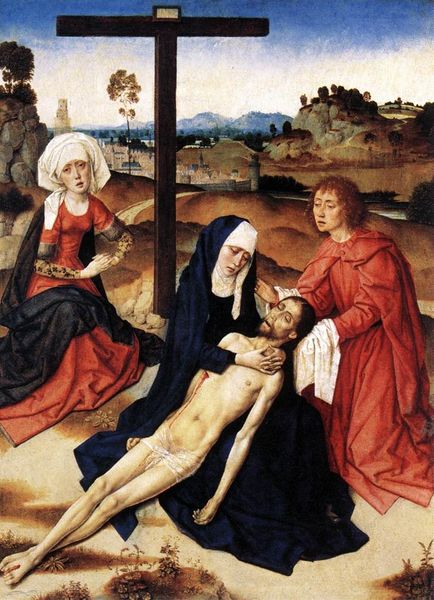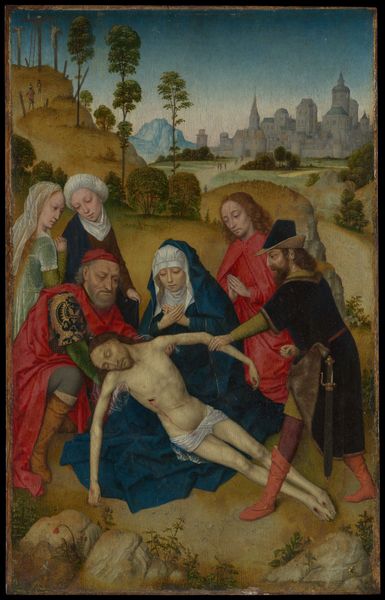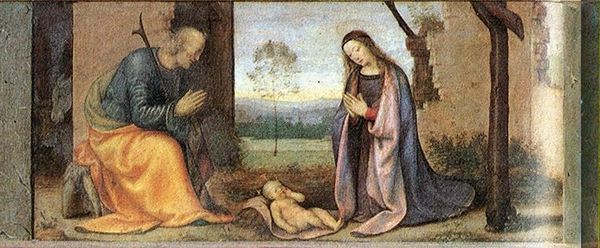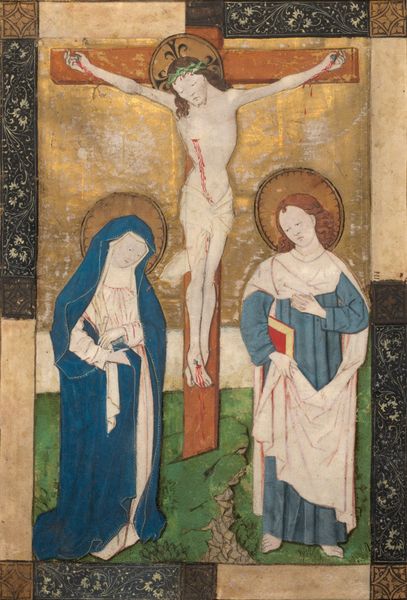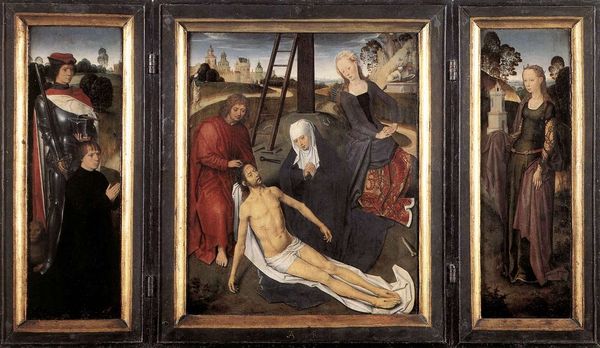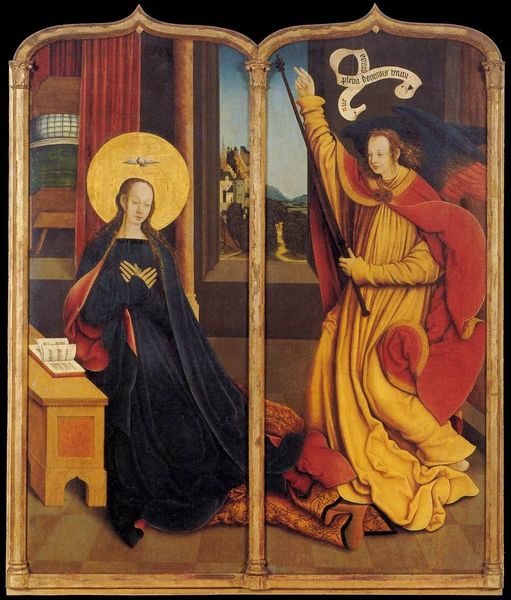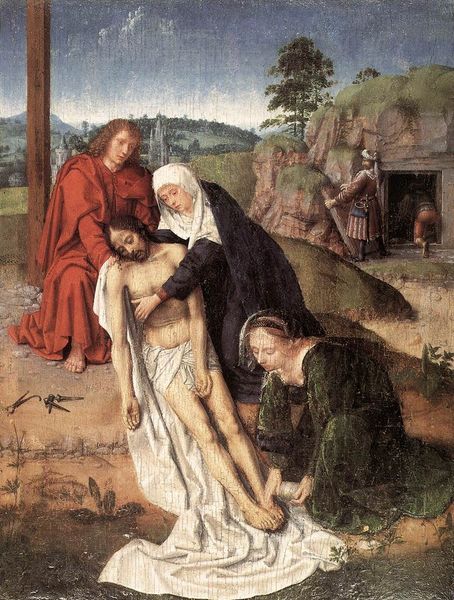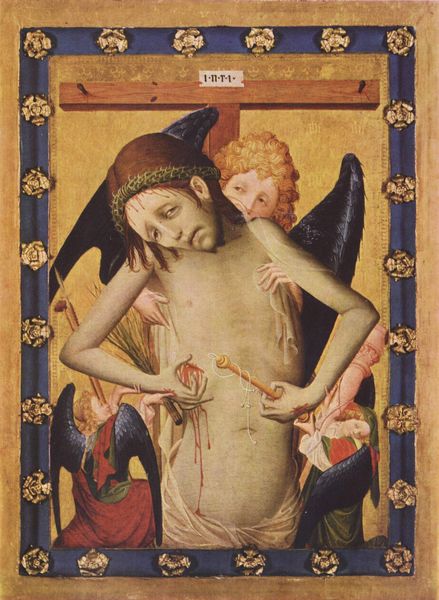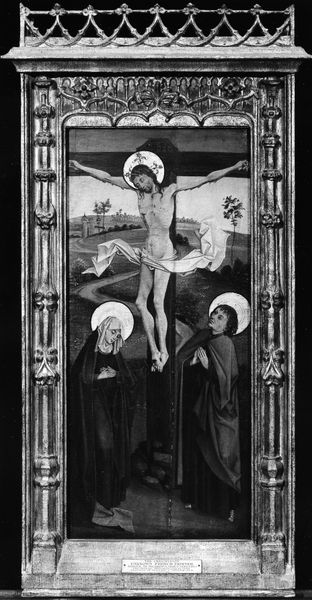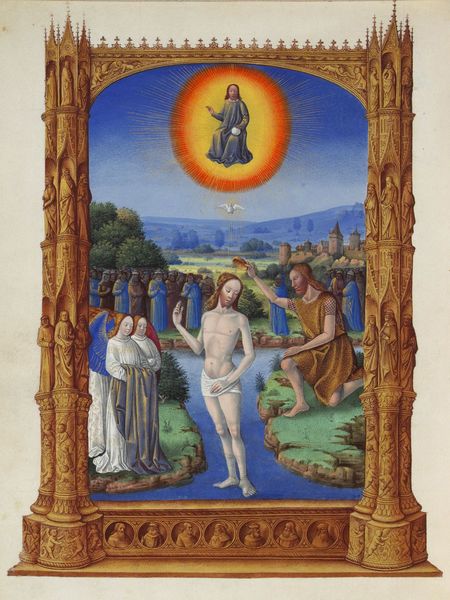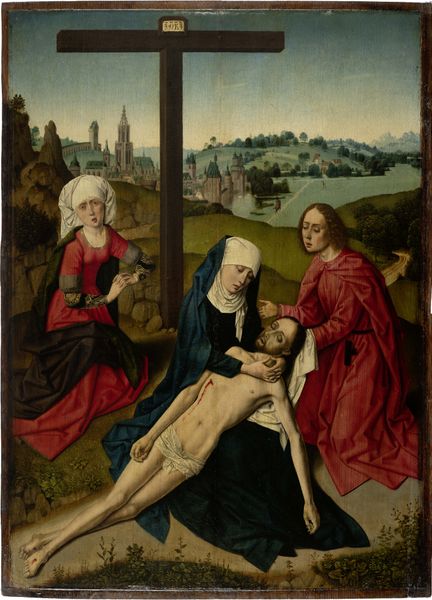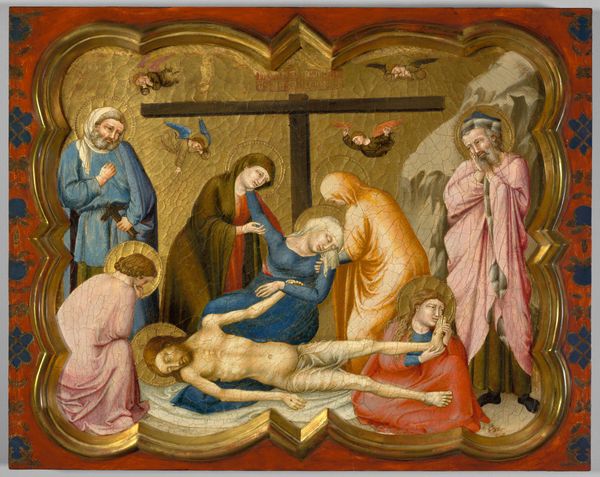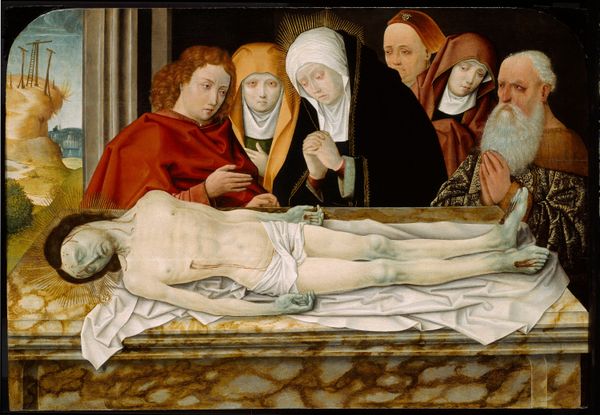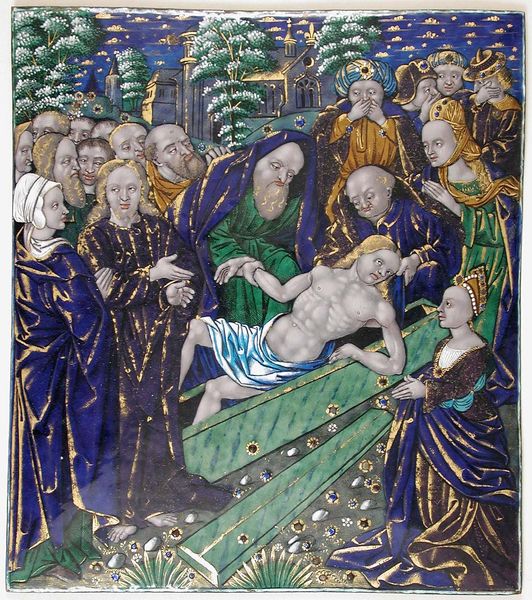
tempera
#
portrait
#
tempera
#
figuration
#
history-painting
#
northern-renaissance
#
virgin-mary
#
miniature
#
christ
Dimensions: 7 3/8 x 5 1/4 in. (18.8 x 13.3cm)
Copyright: Public Domain
Simon Bening made this Pietà around 1520, with pigments and ink on parchment. Think about the intimacy of this small, jewel-like painting. It was originally part of a prayer book, so it's easy to imagine someone holding it, perhaps turning to it for solace. The process of creating such a work was highly specialized. Bening would have begun with a carefully prepared animal skin, stretched and smoothed to create a perfect surface. Then came the painstaking application of colors, ground from minerals and plants, layer upon layer. Look closely, and you can almost see the individual brushstrokes. Medieval workshops like Bening’s weren't just studios, but complex operations, requiring extensive resources. From apprentices grinding pigments to patrons commissioning the work, many hands played a part. That's something to consider when we think about the pietà, not only as an object of devotional contemplation, but as the product of a whole system of labor.
Comments
No comments
Be the first to comment and join the conversation on the ultimate creative platform.
